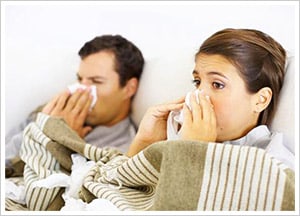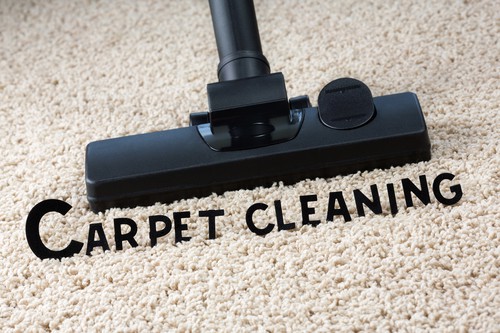Your curtains is your centerpiece, what people first look at when entering a room. Although they are such an elegant addition to many homes around the world, they are often neglected. Yes, admittedly, they look fantastic when you first put them up, but they collect dirt and dust so fast that it hurts. In most cases, we wake up one day and open our curtains to let the sun shower the room, and find ourselves amid a cloud of dust particles dancing around us. At that point, we have two options: (1) Wash them, or (2) Replace them.
Personally, I would rather go for the first option and consider replacing them after some years of use (as an excuse to redecorate!). But, why do drapes get so filthy, in the first place? Well, to begin with, they are the barrier (or filter) between inside and outside. This means that:
1. When you leave your windows open, the drapes attract dirt from the outside and also absorb moisture.
2. When you shut your windows, and if air can get through drafts and cracks, dirt particles enter your house through them, too.
3. All the dust from air vents and fans settle on the draperies. Consider them as powerful dirt magnets!
4. Every time you vacuum or dust, debris and dust particles circulate into the air at higher speeds and, of course, land on your curtains.
So, it becomes apparent that you should clean your curtains more often than you did before as a means to ensure the good health of yourself and your loved ones. To help you achieve that, here are some options:
1. Dusting

1. Always start at the top and work your way down. That should allow you to get rid of all the dust, which, by the way, will be falling onto the parts you have not yet dusted!
2. Focus on the folds and hems where most of the dust settles in.
3. If you are planning to dust your curtains with a damp cloth, better vacuum or dust your curtains first, so you don’t smear dirt. A small piece of advice here: Use a damp cloth on drapes with dark colors.
4. There is no need to unhang your curtains to dust them. If you feel you can’t hold them tight to dust of vacuum them, you can install a more secure curtain rod.
5. Always vacuum or dust both sides, because debris and dust accumulate on the window-facing side, too. Then, they land on the floor or become airborne allergens.
2. Steam Cleaning
Steam cleaners for home use are relatively cheap and now widely available. However, before using one, check the manufacturer’s instructions, just to make sure that steam cleaning is allowed. Generally speaking, if your drapes are machine-washable, then steam cleaning is acceptable, although they will clean up better if you just toss them into your washing machine. Now, if you choose to steam clean the drapes, always follow BOTH the curtain AND steam cleaner manufacturer directions (for DIY steam cleaning). Also, make sure you don’t clean or dust the house immediately after you have steam cleaned your drapes.
Tip: Always allow your curtains to air dry WITHOUT opening the windows. Otherwise, airborne debris and dirt from the open window will sit on the drying curtains. Alternatively, you can have professional carpet cleaners handle this task for you and clean your drapery.
3. Washing Machine Cleaning
This is the easiest and cheapest way to clean your curtains. To get excellent results, here are some tips for you:
1. Handle your curtains with much care. Wash them on the delicate cycle, even if your fabrics are thick.
2. Wash them in cold water. This should prevent fading and shrinking. Only if the manufacturer’s label recommends it, you can wash them in warm water (good option for heavily soiled drapes).
3. Using a detergent specially designed for delicate fabrics (i.e. Woolite) is usually the best treatment for your dirty drapes.
4. Dry on tumble dry or gentle cycle. This should make your curtains last longer while maintaining their colors intact. Plus, you prevent wrinkles and shrinking.
5. Put in the dryer for about 15 minutes, even if you are planning on hanging them outside on a clothesline. That way you will have much less ironing (if at all) to do!
6. Try not to hang your wet drapes to dry, as they could drip onto your flooring or carpet and possibly cause mildew. Instead, hang them slightly damp (it will be much easier to hang them then than when completely dried).
Alternatives to Washing your Drapes

First vacuum and dust your drapes. Then, remove all embedded grime, hairs, and dirt that has not been picked up before, with a lint brush.
For a quick rejuvenation, you can spray them with Febreeze and throw them into your dryer and tumble dry. Don’t use fabric softeners because they might leave a sheen spot or stain your curtains.
Now, if the manufacturer’s label says “Dry Clean Only”, you must let a really knowledgeable dry cleaner or rug cleaner get your drapes cleaned. Needless to say, it is always recommended to do a bit of research before you trust an establishment.
Like drapes, rugs also get dirty often. Most of the times, they call for your immediate care. Do you know how to often you should clean your rugs?
What happens when your rug gets stained with pet urine? How can you clean the rug effectively? We talk about all that and many more in our blog, so feel free to browse!




